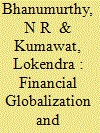|
|
|
Sort Order |
|
|
|
Items / Page
|
|
|
|
|
|
|
| Srl | Item |
| 1 |
ID:
175232


|
|
|
|
|
| Summary/Abstract |
The construction of public-access electric vehicle charging piles is an important way for governments to promote electric vehicle adoption. The endogenous relationships among EVs, EV charging piles, and public attention are investigated via a panel vector autoregression model in this study to discover the current development rules and policy implications from the historical panel data in China. Five policies related to EV charging piles, EV purchase subsidies, commercial land prices, and retail gasoline prices are controlled as exogenous variables in the model. The results indicate that EV and charging piles diffusion do interact, and public attention plays a nexus role in EV and charging piles deployment. Reducing the electricity rate is the most effective policy approach to promote EV charging piles. Subsidising the construction cost has an insignificant impact on charging piles diffusion in this study, and several possible reasons have been discussed. The promotion effect of direct-current charging piles on EV sales is twice that of alternating-current charging piles in the one-year simulation of our model. Increasing the number of EV charging piles has a significant impact on battery electric vehicle sales but not on plug-in hybrid electric vehicle sales.
|
|
|
|
|
|
|
|
|
|
|
|
|
|
|
|
| 2 |
ID:
124520


|
|
|
|
|
| Publication |
2013.
|
| Summary/Abstract |
This paper addresses the relationship between the level of violence and the opium market in Afghanistan's provinces. We first provide an overview of the nature and extent of the Afghan drug trafficking. This is followed by a vector autoregressive analysis of the nexus opium-insurgency activities using monthly time-series data on opium prices and the number of security incidents for 15 Afghan provinces over the period 2004-2009. We use a multifactor error structure, the common correlated effect, to include unobservable common factors; Impulse Response functions to describe the time path of the dependent variables in response to shocks; and the mean group estimator to summarize our results across the provinces. Results suggest a conflict-induced reduction in opium prices, while the reverse opium-violence mechanism is mostly negligible. Moreover, unobservable common factors are the main drivers of opium prices and violence.
|
|
|
|
|
|
|
|
|
|
|
|
|
|
|
|
| 3 |
ID:
172213


|
|
|
|
|
| Summary/Abstract |
The article examines relationship between financial globalization and economic growth in South Asian countries namely Bhutan, Bangladesh, India, Maldives, Nepal, Pakistan and Sri Lanka. Following the framework of Bekaert et al. (2005) and with the help of Panel VAR and Panel causality (in GMM framework) models the study concludes that the causation from financial globalization to growth in the region appears to be weak. There appears reverse causation running from growth to financial globalization. We found that domestic macroeconomic policies such as fiscal prudence act as pull factors for foreign capital. The article has some interesting results at individual country level.
|
|
|
|
|
|
|
|
|
|
|
|
|
|
|
|
| 4 |
ID:
192710


|
|
|
|
|
| Summary/Abstract |
When commodity prices rise in international markets, Africa's economic performance scarcely improves, and when commodity prices fall, its economic performance suffers substantially. This study examines the effect of oil price shocks on Africa's energy transition (ET). Data is obtained for 53 African countries between 2000 and 2020, with the Driscoll and Kraay and Panel VAR regression procedures used. The results reveal that oil price shocks have an adverse influence on Africa's ET, with the findings being strong in both rural and urban contexts. Furthermore, the results expose that the adverse effect is visible only in net crude oil exporting countries, whereas net oil importing countries have no significant effect. Moreover, oil price shocks cannot explain Africa's urban-rural differences in clean energy access. As policy implications, African policymakers should reduce the rural-urban gap in clean energy by investing more in clean energy and technologies in rural areas, which help enhance the resilience of the energy sector to oil price shocks.
|
|
|
|
|
|
|
|
|
|
|
|
|
|
|
|
| 5 |
ID:
143430


|
|
|
|
|
| Summary/Abstract |
This paper provides an empirical exploration of the interaction between fiscal policy, monetary policy, exchange rates, and external balances as well as their impacts on real economic growth and inflation for the BRICS countries. A panel VAR model is employed to assess the dynamic relationships. Our results generally confirm the significant impacts of a monetary shock on real economic activity but the effect of fiscal policy appears to be much weaker from the cross-country perspective. We do not find evidence supporting the “twin deficits” hypothesis but the positive interaction between inflation and interest rates – the “price puzzle” – is documented. When bilateral exchange rates and trade deficits (vis-à-vis the US) are used, we find that the BRICS–US bilateral trade balances do not react considerably to currency depreciation shocks, indicating that exchange rates may not play a critical role in the adjustment of large trade deficits for the U.S.
|
|
|
|
|
|
|
|
|
|
|
|
|
|
|
|
| 6 |
ID:
102769


|
|
|
|
|
| Publication |
2011.
|
| Summary/Abstract |
We investigate changes in Asia's regional and global trade linkages and their influence on macroeconomic relationships among Asia, Europe and the USA. We first document changes in tripartite trade patterns and discuss stylized facts about East Asia's trade structure, with particular focus on the role of China. China plays a critical role in the rapidly expanding intra-Asian trade as an assembly and production center that supplies final goods for the advanced economies. However, China's trade shares in final goods with East Asia and in parts and components with Europe and the USA are rising, suggesting that the region's production chains are becoming increasingly integrated into the global business network. Empirical results from a panel vector autoregression model generally confirm increasingly mutual macroeconomic interdependence among East Asia, Europe and the USA. The findings suggest a future role for Asia as an important trade partner and balancing power in the world economy.
|
|
|
|
|
|
|
|
|
|
|
|
|
|
|
|
|
|
|
|
|